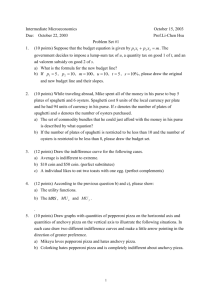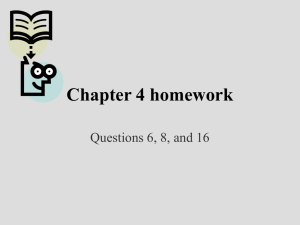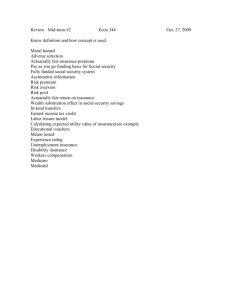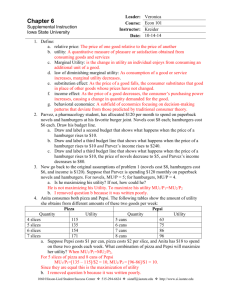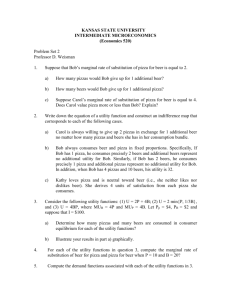Homework Assignment
advertisement
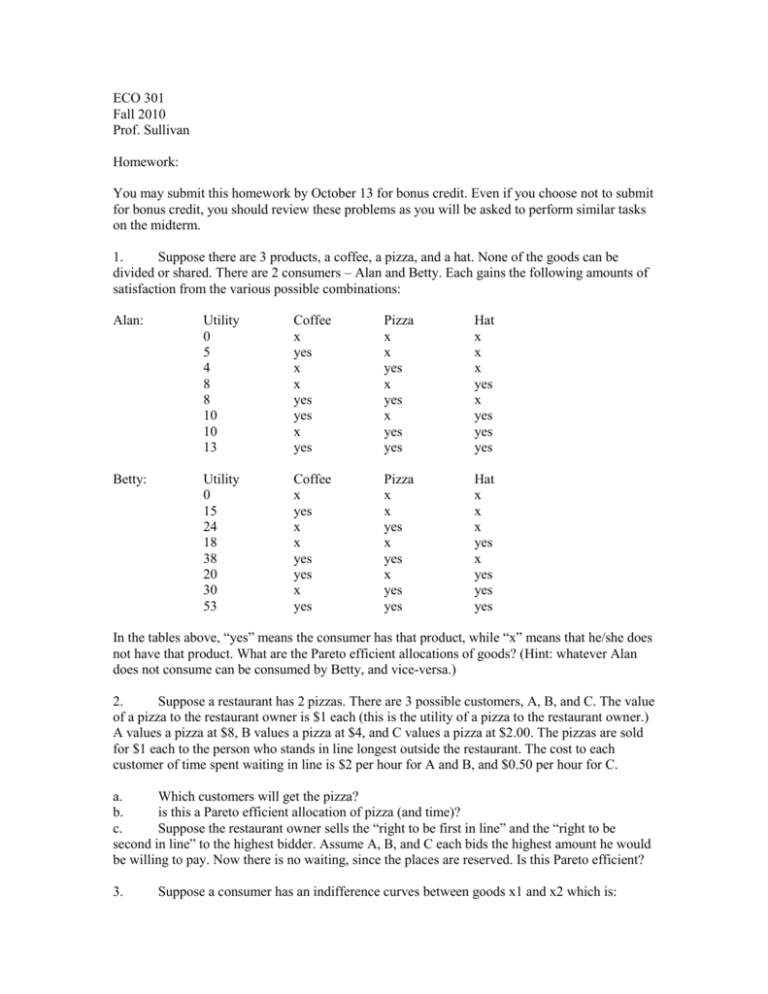
ECO 301 Fall 2010 Prof. Sullivan Homework: You may submit this homework by October 13 for bonus credit. Even if you choose not to submit for bonus credit, you should review these problems as you will be asked to perform similar tasks on the midterm. 1. Suppose there are 3 products, a coffee, a pizza, and a hat. None of the goods can be divided or shared. There are 2 consumers – Alan and Betty. Each gains the following amounts of satisfaction from the various possible combinations: Alan: Utility 0 5 4 8 8 10 10 13 Coffee x yes x x yes yes x yes Pizza x x yes x yes x yes yes Hat x x x yes x yes yes yes Betty: Utility 0 15 24 18 38 20 30 53 Coffee x yes x x yes yes x yes Pizza x x yes x yes x yes yes Hat x x x yes x yes yes yes In the tables above, “yes” means the consumer has that product, while “x” means that he/she does not have that product. What are the Pareto efficient allocations of goods? (Hint: whatever Alan does not consume can be consumed by Betty, and vice-versa.) 2. Suppose a restaurant has 2 pizzas. There are 3 possible customers, A, B, and C. The value of a pizza to the restaurant owner is $1 each (this is the utility of a pizza to the restaurant owner.) A values a pizza at $8, B values a pizza at $4, and C values a pizza at $2.00. The pizzas are sold for $1 each to the person who stands in line longest outside the restaurant. The cost to each customer of time spent waiting in line is $2 per hour for A and B, and $0.50 per hour for C. a. Which customers will get the pizza? b. is this a Pareto efficient allocation of pizza (and time)? c. Suppose the restaurant owner sells the “right to be first in line” and the “right to be second in line” to the highest bidder. Assume A, B, and C each bids the highest amount he would be willing to pay. Now there is no waiting, since the places are reserved. Is this Pareto efficient? 3. Suppose a consumer has an indifference curves between goods x1 and x2 which is: (1/2) (1/2) x1 + x2 = N, where N represents the level of utility. a. b. c. Are these preferences monotonic (weakly or strictly)? Are these preferences convex (weakly or strictly)? What is the marginal rate of substitution where N = 8 and x1 = 4? 4. Bob says his utility function is U = x1x2, so his utility level is 4 if x1 = 2 and x2. Carol says her utility function is U = x1x2 + 10. Ted says his utility function is U = 2x1x2 + 20. 2 Alice says her utility function is U = [2x1x2 + 20] . Is it possible to tell which person is choosing bundles of x1 and x2 for a given budget just by seeing what choices are being made? How? 5. Below are some indifference curves. For each graph, identify whether the preferences are: a. b. non-monotonic (NM), weakly monotonic (WM), or strongly monotonic (SM) non-convex (NC), weakly convex (WC), or strongly convex (SC) 6. Suppose U = x1 (1/2) + x2 Both p1 and p2 equal 1. a. Show the draw a graph showing the indifference curves and show the income expansion path (income offer curve). b. Draw the Engel curve for x1. (Hint: be careful to think about what happens when M gets small). c. Suppose M = 5, p2 = 1, and p1 = 1/4. (Hint: x1 = 4, x2 = 4 is a good point to take a close look at.) Then p1 rises to p1 = 1/2. Find the change in x1 demanded, and de-compose this change in x1 into the substitution effect and the income effect using the Slutsky method. d. For the same change in p1 as part c, decompose the change in x1 into substitution and income effects using the Hicks method. (For parts c and d, you should be able to find the quantity of x1 demanded after the compensation.) 7. Suppose U = x1 + x2 and the consumer’s budget is p1x1 + p2x2 ≤ 12 where p2 = 4. Hint, this requires no computation or calculation, just drawing a good diagram and a little thought. a. b. c. Draw (accurately) the ordinary demand function for x1. Draw (accurately) the Slutsky compensated demand function for x1 if p1 is initially 3. Draw (accurately) the Hicks compensated demand function for x1 if p1 is initially 3.

